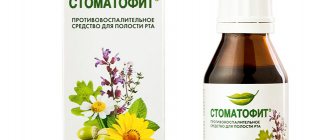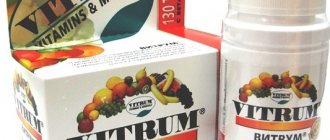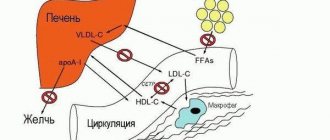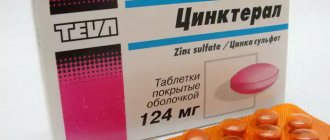To keep the body in good shape, it is necessary to take vitamin-mineral complexes, since it is not always possible to obtain the required amount of vitamins, minerals and other useful compounds from food. Vitrum vitamins include many components that are aimed at the normal functioning of all organs and systems of the body. The drug has not been developed specifically for men, but a wide range of complexes allows you to choose the optimal product in connection with the specific needs of a man. So, let's learn everything about Vitrum vitamins, their types and features of use.
Release form and abstract
Vitrum Classic is a capsule-shaped tablet with a peach-colored film shell. The tablet has a scoring line on one surface and an engraving 'Vitrum' on the other. A specific odor may be present.
Available in the form of polyethylene bottles, packed in boxes made of cardboard. One bottle may contain:
- 30 tablets;
- 60 tablets;
- 100 tablets;
- 120 tablets;
- 130 tablets.
Vitamins Vitrum for women
At all times, women wanted to look beautiful. For this purpose, cosmetics were invented, jewelry was invented and outfits were sewn.
One thing has always remained unchanged and valuable - health. A healthy complexion, silky hair, strong nails and velvety skin are what truly adorns a woman.
The line of vitamins for women includes “Vitrum Beauty”, “Vitrum Beauty Luxe”, “Vitrum Elite”, intended for different age categories.
The amount of minerals and vitamins required for each age is contained in the required dosages and proportions.
Also, a distinctive feature of this line is the presence of extracts of various plants, which contain large quantities of substances such as bioflavonoids. They have a beneficial effect on the skin and have an antioxidant effect.
Also in the range of Vitrum vitamins for women there are vitamin complexes with a more narrowly targeted effect: to improve the condition of the skin, brain or heart activity, with an antioxidant effect, and with a high content of vitamin E.
A wide range will allow each woman to choose vitamins to suit her individual needs.
Composition of the Vitrum vitamin complex
The carefully selected range of multivitamins and minerals included in the drug (a complex of 13 vitamins and 17 minerals) best meets the body's needs to maintain overall health and well-being . Beta-carotene is a precursor to vitamin A, a powerful antioxidant, and can also stimulate the immune system.
A large amount of vitamin C protects body cells from the harmful effects of free radicals, which promotes a young and fresh appearance, and this is important in our time. Vitamin E is actively involved in the metabolism of substances and helps saturate tissues with oxygen. B vitamins have a beneficial effect on the functioning of the central nervous system. Without vitamin K, proper kidney function is unthinkable.
The active ingredients of the product are presented in the table:
| Substance | Dosage, mg |
| Vitamin A (retinol acetate), beta-carotene | 1,515 |
| Vitamin E (tocopheryl acetate) | 30 |
| Vitamin D3 (colecalciferol) | 0,01 |
| Vitamin B1 (thiamine mononitrate) | 1,5 |
| Vitamin B2 (riboflavin) | 1,7 |
| Vitamin B5 (calcium pantheonate) | 10 |
| Vitamin B6 (pyridoxine hydrochloride) | 2 |
| Vitamin B9 (folic acid) | 0,4 |
| Vitamin B12 (cyanocobalamin) | 0,006 |
| Vitamin C (ascorbic acid) | 60 |
| Vitamin K1 (phytomenadione) | 0,025 |
| Vitamin PP (nicotinamide) | 20 |
| Vitamin H (biotin) | 0,03 |
| Potassium chloride (converted to potassium) | 40 |
| Calcium hydrogen phosphate (converted to calcium) | 162 |
| Magnesium oxide | 100 |
| Calcium hydrogen phosphate (converted to phosphorus) | 125 |
| Ferrous fumarate | 18 |
| Copper oxide | 2 |
| Zinc oxide | 15 |
| Manganese sulfate | 2,5 |
| Potassium iodide (conversion to iodine) | 0,15 |
| Sodium molybdate (converted to molybdenum) | 0,025 |
| Sodium selenate (converted to selenium) | 0,025 |
| Chromium chloride | 0,025 |
| Nickel sulfate | 0,005 |
| Sodium metavanadate (converted to vanadium) | 0,01 |
| Tin chloride | 0,01 |
| Silica | 0,01 |
| Potassium chloride (converted to chlorine) | 36,3 |
Excipients are presented:
- fine crystalline cellulose;
- stearic acid;
- croscarmellose sodium;
- magnesium stearate.
Popular vitamin preparations and dietary supplements
Among the proven effective vitamin and mineral preparations:
- Alphabet: complex preparation containing basic substances;
- Aevit: contains retinol and tocopherol;
- Ascorutin: ascorbic acid and rutin;
- Complivit: a line of complex vitamins and minerals;
- Malti-tabs: lozenges with vitamin complexes for children;
- Pikovit: combination drug;
- Centrum: a line of drugs to maintain health;
- Pantovigar: a product for improving the condition of hair and nails;
- D3-Nycomed: to compensate for calcium and vitamin D deficiency;
- Vikasol: a drug with vitamin K.
Preparations and complexes can be used to generally strengthen the body or to solve specific health problems. They are sold in pharmacies, have a cumulative effect, are effective, and can be combined with medications.
Common popular dietary supplements:
- L-carnitine: to regulate metabolism;
- Blueberry forte: to reduce eye fatigue;
- Lutein: to maintain vision;
- Turboslim: for weight loss;
- Gingko biloba: improves cerebral circulation;
- Viardot: helps with erectile dysfunction;
- Ovesol: cleanses the gallbladder;
- Lose weight: fat-burning tea;
- Tasty iron: to increase hemoglobin levels in children;
- Cyclovita: to restore the menstrual cycle.
Indications and contraindications
Used during:
- intense mental and physical activity;
- recovery from infectious and inflammatory diseases;
- insufficient and unbalanced nutrition.
It can be used in the prevention of hypovitaminosis, deficiency of minerals and trace elements. Use is prohibited when:
- vitamin A hypervitaminosis;
- excess vitamin D in the body;
- children under 18 years of age;
- the presence of hypersensitivity reactions to the components of the product.
Reference! Contraindications for hypervitaminosis of vitamins A and D are due to the ability of their accumulation in the body with the subsequent development of adverse reactions.
What are dietary supplements
Decoding the abbreviation gives a comprehensive answer. A food additive enriches dishes with missing nutrients and compounds. These products are similar to vitamin ones, but many have expanded purposes:
- nutraceuticals: contain active components for correcting metabolism and strengthening the body;
- prebiotics: normalize internal microflora and intestinal function;
- parapharmaceuticals containing medicinal substances: relieve symptoms of diseases and delay their development.
How to take the pills?
The course of taking vitamins is one tablet per day. It should not be taken before meals; it should be taken after and washed down with plenty of water.
Course duration is 1-2 months. How to open a bottle of vitamins? To do this, you should perform the following algorithm of actions:
- Remove the bottle from the cardboard box.
- Remove the protective film.
- Press down on the bottle cap.
- Turn the cap clockwise.
- Remove the protective valve from the neck.
Use in special groups
Use for:
- pregnancy – prohibited;
- breastfeeding – not allowed;
- children under 18 years of age – prohibited;
- a history of chronic diseases is allowed.
The paradox of vitamins: why you can’t drink them just like that and how it can end
Vitamins are organic compounds needed in small quantities to support life. Nutrition experts say people only need the recommended daily allowance - the amount found in a typical balanced diet. Manufacturers claim that the regular diet does not contain enough vitamins, and the more you take, the better. But modern research shows that additives not only cause temporary negative effects on human health, but can also cause serious illness, including death.
B vitamins
People used to think that B vitamins were harmless because, like vitamin C, they are water soluble and cannot be stored in the body like fat-soluble A, D, E and K. However, scientists have now determined that excessive consumption of certain B vitamins causes serious health problems.
For example, vitamin B6 (pyridoxine) can cause neurodegenerative changes even when taken slightly above the recommended dose over a long period of time. Higher doses of B6, when accumulated in the body, lead to damage to nerve endings, causing numbness and tingling in the limbs, which can eventually become irreversible. Too much causes sensitivity to sunlight, skin rashes, nausea, vomiting, chronic abdominal pain, loss of appetite and liver dysfunction.
High doses of vitamin B3 (niacin) also cause problems when exceeding the dosage of 2-3 g per day to lower cholesterol. Reactions range from redness, itching, nervousness and headache to intestinal cramps. Those who take more than the recommended dose of niacin may experience nausea, jaundice, elevated liver enzymes, and a toxic pattern that mimics hepatitis. Symptoms disappear when you stop taking niacin. Lean meats, milk, eggs, whole grain breads and cereals, nuts, leafy green vegetables and protein foods are the best natural sources of niacin. If you follow a balanced diet, there is no need to take it additionally.
In humans, vitamin B12 plays a role in metabolism, red blood cell formation, and the maintenance of the central nervous system. According to a 2015 study, an overdose of B12 may contribute to acne. The study showed that upon contact with it, the skin bacteria P. acnes, with the help of porphyrin, begin to activate the process leading to acne inflammation. This is a key step in the later stages of acne development.
Huiying Li, co-author of the study and assistant professor of pharmacology at the David Geffen School of Medicine at UCLA, said she believes the connection is clear. Her team decided to conduct an experiment that clearly, at the molecular level, demonstrates the harmful effects of the vitamin. “There is still a lot to be studied to understand whether B12 actually causes acne,” says Lee. She also cautioned that it is too early to tell whether people with breakout problems should stop taking multivitamins with B12. The scientist noted that most of the studies that found an increase in inflammation associated with taking the vitamin involved one-time, high-dose injections.
Vitamin C
When dosed correctly, vitamin C neutralizes charged free radicals by accepting their free electron. This is a real “molecular martyr”, taking the blow to protect the cellular neighborhood.
But by accepting an electron, vitamin C itself becomes a free radical that can damage cell membranes, proteins and DNA. As food chemist William Porter wrote in 1993, “Vitamin C is truly a Janus-faced, Dr. Jekyll-Mr. Hyde, an oxymoron of antioxidants.” Chemical pathologists at the University of Leicester discovered during a six-week study of 30 healthy men and women that a daily vitamin C supplement of 500 mg had pro-oxidant as well as antioxidant effects on the DNA of genetic material. Researchers have found that at the 500 mg level, vitamin C promotes genetic damage by free radicals to part of the DNA, the adenine bases.
The results, published in Nature, confirm warnings issued for decades by American physician Dr. Victor Herbert, professor of medicine at Mount Sinai School of Medicine in New York. Herbert has shown, primarily through laboratory studies, that vitamin C supplements promote the body's production of iron free radicals.
“Vitamin C supplements mobilize harmless iron stored in the body and convert it into iron that causes damage to the heart and other organs,” says Dr. Herbert. — Unlike the vitamin naturally present in foods such as orange juice, it is not an antioxidant when taken as a supplement. It is a redox agent—an antioxidant in some circumstances and a pro-oxidant in others.”
Many people think that vitamin C helps prevent colds. Despite studies around the world, there is still no conclusive evidence to support this. Some experiments have shown that taking large doses of vitamin C (more than 1,000 mg per day) continuously or at the first sign of a cold can reduce some symptoms and their duration—making them about half a day shorter. And this does not interfere with the cold at all.
Large doses may cause nausea, abdominal cramps, headaches, fatigue, kidney stones and diarrhea. It can also affect the body's ability to process (metabolize) other nutrients, such as causing iron levels to spike.
Excessive amounts of vitamin C in the body can also affect medical tests, such as diabetes. Adults need about 45 mg of vitamin C per day. However, almost any excess amount is quickly eliminated from the body.
Vitamin E
Vitamin E is often cited as a potential source of youth. However, there is no evidence that taking large doses can either stop or reverse the signs of aging. None of the vitamins can restore sexual desire or cure infertility.
In a study published in the New England Journal of Medicine in 1994, 29,000 Finnish men, all of them smokers, received daily vitamin E, beta-carotene, both, or a placebo. The study found that those who took beta-carotene for five to eight years were more likely to die from lung cancer or heart disease.
Two years later, another study on vitamin supplements was published in the same journal. In it, 18,000 people who had a history of increased risk of lung cancer due to exposure to chemicals or smoking were given a combination of vitamin A and beta-carotene or a placebo. The researchers stopped the trial when they found that those taking the vitamins had a 46% higher risk of dying from lung cancer.
Then, in 2004, the SELECT (Selenium and Vitamin E Cancer Prevention Trial) was designed to determine the long-term effects of selenium and vitamin E supplementation on prostate cancer. Previous experiments have hinted that both substances may provide protection against prostate cancer. But the study found a 17 percent increase in the risk of prostate cancer in men who took 400 units of vitamin E daily.
More than 35 thousand men from the United States, Canada and Puerto Rico were divided into four groups in a randomized controlled trial. One group took 400 international units of vitamin E per day, a second took 200 mcg of selenium per day, a third took both vitamin E and selenium, and a fourth took an inactive placebo only.
All men were aged 50 years or older and had no early signs of prostate cancer, as determined by digital rectal examination and PSA levels. The experiment began in August 2001 and ended in June 2004.
Preliminary results from the study showed an increase in the incidence of prostate cancer in both the vitamin E and selenium groups. Although this increase was not statistically significant, the increase in the vitamin E group was almost the same. The trial aimed to test the protective effect of vitamin E or selenium, but only found evidence of possible harm.
Another review, published in 2005 in the Annals of Internal Medicine, found that in 19 trials involving nearly 136,000 people, supplemental vitamin E increased the risk of premature death. In people with vascular disease or diabetes, it increased the risk of heart failure.
Vitamin A
Vitamin A is known for helping to maintain good vision, healthy skin, teeth, skeletal and soft tissues, and mucous membranes. People who do not get enough vitamin A are more likely to suffer from infections and eye problems.
But a high dose of vitamin causes nausea, vomiting, diarrhea, loss of appetite, fatigue, headaches, dizziness, blurred vision, poor muscle coordination, itching and flaking of the skin, bone pain, hair loss, irregular menstruation in women, osteoporosis and temporary or permanent liver damage. High doses of vitamin A also increase the risk of lung cancer in smokers. The problem with it is that, unlike other vitamins, excess amounts are not washed out in the urine, but rather accumulate in the liver.
Acute vitamin A hypervitaminosis was first documented in Arctic explorers who unknowingly consumed the vitamin A-rich livers of many Arctic animals—seals, huskies, and even polar bears. Scientists have identified the symptoms of this extremely unpleasant condition as hair loss, damage to the skin and liver, hemorrhage, coma and death.
In November 1912, a team of three men and 16 dogs set out from a remote base in eastern Antarctica to explore a series of cracks in the ice.
Three months later, only one of the men has returned. His name was Douglas Mawson. His skin was peeling off and his hair was falling out. He lost almost half his weight. He said Sir Edmund Hillary called the expedition "the greatest survival story in the history of polar exploration."
After a month of travel, one member of the team, along with a tent, provisions and six dogs, fell into a crevice. Mawson and his colleague Xavier Mertz decided to return to base, surviving by eating the remaining dogs. A few weeks later, Mertz began to experience severe abdominal pain. Then his skin began to peel off and his hair fell out. He died of dehydration and delirium a few days later.
Mawson had similar symptoms but managed to survive despite starvation and lack of vital nutrients. Mawson's description of his symptoms is almost textbook description of a vitamin A overdose - probably from eating a dog's liver. Just 100 grams of husky liver can give a hungry researcher a lethal dose.
Arctic expedition with Douglas Mawson
Vitamin D
Our genetics influence our vitamin D levels. We can use this information to determine whether low amounts may actually increase the risk of disease (rather than being a consequence of it). The evidence so far suggests that low vitamin D levels are either irrelevant or only a marker of disease. But research over the past five years has shown that even vitamin D and calcium supplements, and their lack of effectiveness in preventing fractures, may increase the risk of heart disease.
While several studies in normal people found no protective effects from vitamin D, others were more concerning. One randomized trial conducted in 2015 among 409 older people in Finland found that it did not provide any benefit over placebo or exercise, and that the incidence of fractures was actually slightly higher.
The usual prescribed dose in most countries is 800 to 1,000 units per day (i.e., 24,000 to 30,000 units per month). However, two randomized studies found that vitamin D in amounts of 40 to 60 thousand units per month actually becomes dangerous.
A study of more than 2,000 older Australians found that patients who received high doses until blood levels of vitamin D were within the optimal range only had a 20 to 30% increase in fractures and falls compared with those who received low doses. or has not reached “optimal blood levels.”
Explaining why vitamin D supplements are often harmful is more difficult. Some people who do not take supplements have naturally high levels of the vitamin in their blood. This may be due to them spending a lot of time in the sun or regularly eating oily fish - and there is no evidence that this is harmful. Above-average levels may also be due to genes, which on average account for about 50% of the variation between people. Thus, doctors' obsession with trying to get everyone to a standard normal target blood level is as unprofessional as a one-size-fits-all approach to diet.
Calcium
Calcium is an important nutrient for bone health, but new research shows that older women who take higher doses of the nutrient are at risk for cardiovascular disease, which can be fatal.
Swedish researchers followed 61,433 women born between 1914 and 1948 for an average of 19 years, noting their causes of death. The researchers also used questionnaires to record the intake of various calcium supplements. Taking into account measures of physical activity, unhealthy habits and dietary factors, they found that women who consumed 1,400 mg or more of calcium per day had twice the risk of cardiovascular disease compared with those who took 600 to 1,000. mg. These women also showed a 49% higher rate of death from cardiovascular disease and a 40% higher rate of death from any cause.
The authors note that calcium may increase blood levels of a protein associated with an increased risk of cardiovascular disease.
"If you have a normal diet, you don't need to take calcium supplements," said Dr. Carl Mikaelsson, a professor and orthopedic surgeon at Uppsala University in Sweden. “Calcium supplements are helpful if your calcium intake is very low, but only a doctor can determine the exact dosage.”
Iron
Anemia is a condition that occurs when you don't have enough healthy red blood cells to deliver enough oxygen to your tissues. It is common in women and can cause fatigue and a feeling of weakness.
Taking iron supplements without the dose recommended by your doctor is extremely dangerous. Unneeded iron accumulates in the body and can even rise to toxic levels. Taking too much iron causes skin discoloration, enlarged liver or spleen, abdominal pain, congestive heart failure, irregular heart rhythm, and insulin-dependent diabetes.
Excessive amounts of iron are especially common in pregnant women. A recent study by a group of doctors in India found that excessive iron intake among healthy, non-anaemic women can lead to problems such as low birth weight, premature birth and poor growth of the baby during the uterus.
Why is this dangerous?
The fight between antioxidants and oxidation from the lips of representatives of pharmaceutical companies sounds like a fight between good and evil. Oxidation occurs in cellular organelles called mitochondria, where the body converts food into energy, a process that requires oxygen. One of the consequences of oxidation is the generation of free radicals. They can damage DNA, cell membranes, and the lining of the arteries; it's no wonder they've been linked to aging, cancer and heart disease.
To neutralize free radicals, the body produces antioxidants. Antioxidants can also be obtained from fruits and vegetables, especially selenium, beta-carotene and vitamins A, C and E. Some studies have shown that people who eat more fruits and vegetables have a lower incidence of cancer and heart disease and live longer. The logic is obvious. If fruits and vegetables contain antioxidants, and people who eat fruits and vegetables are healthier, then those who take additional antioxidants should also be healthier. But it doesn't work.
A likely explanation is that free radicals are not as bad as they are made out to be. (People actually need them to kill bacteria and destroy new cancer cells.) And when people take large doses of antioxidants in the form of supplemental vitamins, the balance between the production and destruction of free radicals can tip too far in one direction, causing an unnatural state where the immune system no longer functions fully. Researchers call this the antioxidant paradox.
The news that any vitamin can be dangerous is very alarming. We need to take the abuse of these chemicals much more seriously before regularly adding them to our food supply. The billions we spend on these products, supported by the poorly regulated but rich and powerful vitamin industry, could be worth spending on proper healthcare. And people should understand that it is much wiser to organize proper nutrition, physical activity and sufficient exposure to fresh air. For most people, this lifestyle will ensure that they get all the beneficial vitamins they will ever need.
Drug interactions
When taking Vitrum Classic vitamins simultaneously with:
- antibacterial drugs of the tetracycline group (Tetracycline, Doxycycline), antimicrobial agents - derivatives of fluoroquinolones (Norfloxacin, Ofloxacin) - there is a slowdown in the absorption of the latter in the gastrointestinal tract;
- antimicrobial agents of the sulfonamide group (Sulfazin, Co-trimaxozol) enhance the effect of the latter;
- antacid drugs (Omeprazole, Pantoprazole) slow down the absorption of iron;
- thiazide diuretics (Indapamide, Hypothiazide) increase the risk of hypercalcemia.
Pharmacodynamics
The action is determined by the components of the drug. Thanks to the components of the drug, various metabolic processes are regulated. Thus, vitamins A, B1, B2, B3, B6, B12, C, E, PP and the mineral ions of manganese, zinc and molybdenum regulate nitrogen, mineral and protein types of metabolism and redox processes, and potassium and magnesium – water-electrolyte exchange.
Selenium, which is part of the drug, improves tissue elasticity. Chromium and zinc are actively involved in the formation of sex hormones, and copper and iron are actively involved in the formation of hemoglobin. To improve the function and structure of epithelial and bone tissue, the complex includes silicon and tin.
Shelf life and storage conditions
Storage temperature ranges from 10 to 30 °C. Can be used for 3 years from the date of manufacture. Keep away from children. Conditions for dispensing from pharmacies, cost. They are an over-the-counter drug. The cost of vitamins starts for a bottle containing:
- 30 tablets – from 500 rubles;
- 60 tablets – from 760 rubles;
- 100 tablets – from 1300 rubles;
- 120 tablets – from 1500 rubles;
- 130 tablets – from 1760 rubles.
Instructions for use
For children from 6 to 12 years old, 50% of the adult dosage is used. For these vitamins, this is 0.5 tablets once a day.
Starting from the age of thirteen, you must take the whole tablet once a day, every day. The drug is administered orally. However, before taking the tablet, it must be completely dissolved in clean drinking water. It is best to take vitamins after meals.
Attention! The volume of water in which the vitamin complex is dissolved must be strictly 75% (or ¾ of the part) of the volume of the glass.
Analogs
The following agents are similar in their mechanism of action:
Alphabet Classic. Manufacturer: Vneshtorg Pharma, Russia. Available in 60 and 120 tablets. The complex is divided into 3 steps. The composition is similar to that of Vitamins Vitrum Classic. The cost for 60 tablets starts from 290 rubles, for 120 - from 420.- Complivit. Manufacturer: Pharmstandard, Russia. Available in 10, 30, 60 tablets. It contains rutin, cobalt, lipoic acid. Price for 10 pieces in a package - from 90 rubles, for 30 tablets - from 170, for 60 - from 205 rubles.
- Supradin. Manufacturer: Bayer, Germany. Available in the form of effervescent tablets of 10, 20, 60 pieces per package. The composition does not contain chromium, iodine, selenium, nickel, or tin. The cost for a package with 10 tablets starts from 420 rubles, with 20 tablets - from 680 rubles, with 60 - from 1230.
Vitamins, minerals, microelements are some of the most necessary substances for the body. Their deficiency can cause many pathologies. But it should be remembered that before use you should consult a specialist, as there are contraindications for use.
Main differences
Vitamins and dietary supplements are sold without prescriptions, have similar release forms, and can be difficult to distinguish without studying the instructions. Here are the main identification criteria:
- the name of the vitamins must be duplicated in Latin;
- their packaging and instructions list the components in the current dosage, indications and contraindications, like traditional medicines;
- the composition contains only natural or similar vitamin components, minerals, fatty acids and amino acids; there are no various extracts, decoctions, extracts and substances with exotic names.
Dietary supplements are often packaged in pharmaceutical blisters and bottles, but their tablets, powders and mixtures are more related to food than to medicine:
- the packaging is marked: “not a medicinal product”;
- among the names of the remedies there are no scientific ones, but many are intuitive or exotic, for example Sophia, Ginekol, Shark oil, Klima, etc.;
- vitamins and minerals are indicated, but without dosages, supplemented with other bioactive components, including crushed plants, homeopathic compounds;
- Certificates and instructions do not specify any therapeutic effect of the drugs, but there may be information about improving well-being, skin condition, and replenishing the deficiency of nutrients.
Dietary supplements, unlike vitamin preparations, do not undergo clinical trials. Their composition has not been tested for pharmacologically effective content. Products can contain anything: vitamins, fats, acids, chondroprotectors, phytohormones, minerals, alkaloids, tannins. They are certified only to confirm safety.
Average cost of vitamins
National average prices are shown in the table:
| Name | Number of tablets per package, pcs. | price, rub. |
| Vitrum Plus | 30 / 60 | 443 / 733 |
| Vitrum Beauty Plus | 60 | 1639 |
| Vitrum Prenatal Plus | 30 / 100 | 487 / 1268 |
| Vitrum Vision Plus | 60 | 1318 |
| Vitrum Centuri | 30 | 472 |
| Vitrum Superstress Plus | 30 | 706 |
| Vitrum Kids Plus | 30 | 445 |
| Vitrum Junior Plus | 30 | 411 |
| Vitrum Kids Gummi | 30 | 583 |
| Vitrum Omega-3 | 60 | 1533 |
Despite their imported origin, American vitamins cannot be called difficult to obtain. They can be bought in pharmacies or on websites that sell dietary supplements and products for healthy eating.
special instructions
Patients with cancer and endocrine diseases are prohibited from taking vitamin and mineral formulations without consulting a doctor: increased doses of iodine, selenium and other nutrients can negatively affect the health of patients.
Vitrum is prescribed with caution for cholelithiasis, diabetes mellitus, chronic pancreatitis, pathologies of the liver, stomach and duodenum.
The drug does not affect reaction speed and does not reduce concentration, therefore, during a preventive or therapeutic course, it is allowed to drive cars and dangerous machinery.
Overdose symptoms
Failure to follow the instructions and increase the recommended doses by 2-3 times can cause general weakness, nausea, vomiting, gastrointestinal problems, headaches and allergic reactions.
In case of overdose, you need to rinse your stomach (drink 3-5 glasses of warm water and induce vomiting), take activated charcoal at the rate of 1 tablet per 10 kg of body weight. After this, you can carry out symptomatic treatment, for example, take medicine for headaches or lubricate the problem area of the skin with antiallergic ointment. In severe cases, you should consult a doctor.








